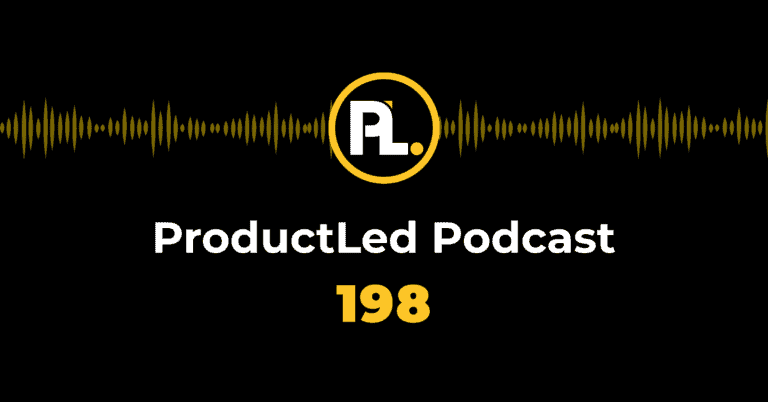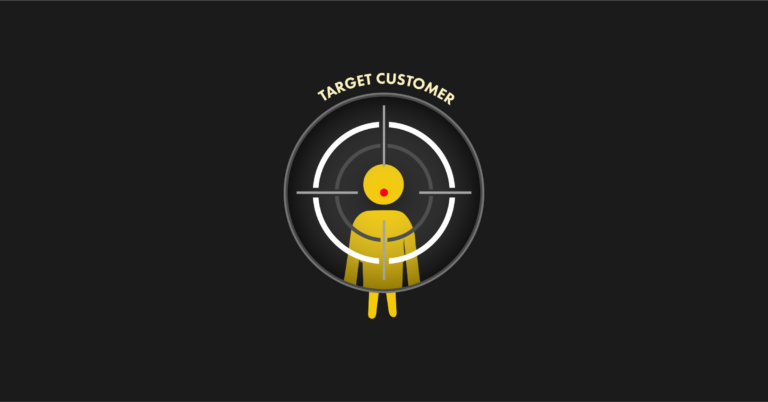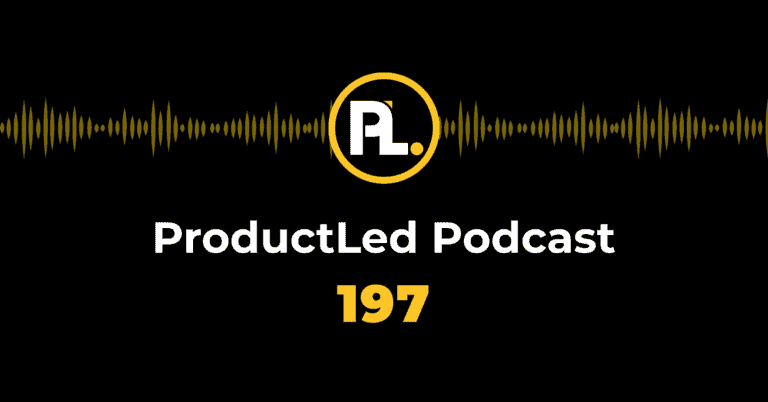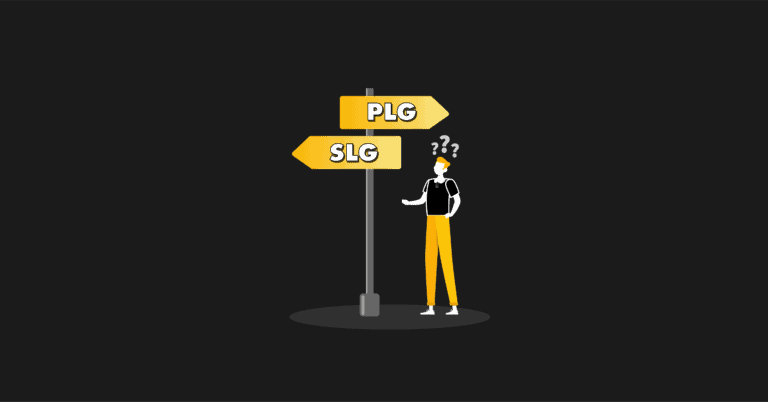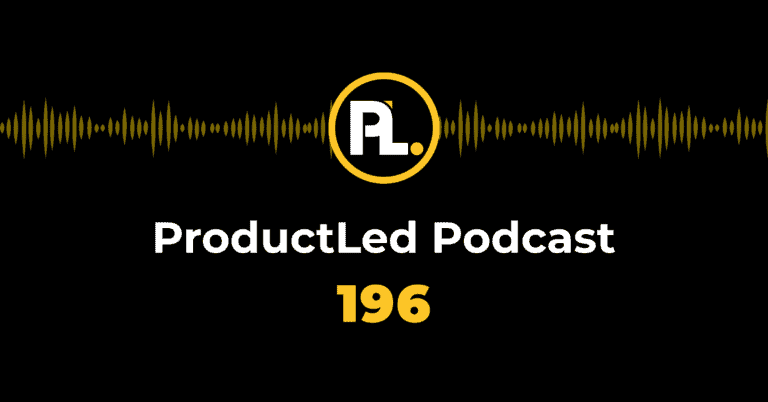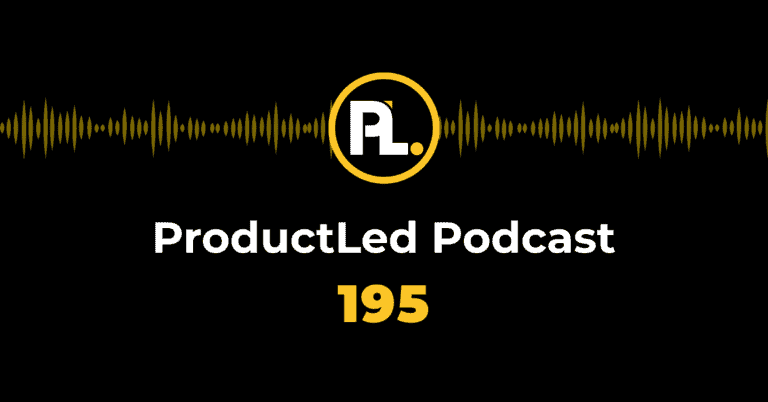Calendly, Zoom, Slack, and Dropbox are all incredible product-led companies that seem to be highlighted in every product-led growth (PLG) example.
But what characteristics make them worth looking at?
After signing up with more than 50 product-led growth companies, we found the features they all have in common.
Here’s a quick overview of our findings:
- Extensive Resource Library (Appcues)
- Enhance Virality (Airtable)
- Appeal to Users’ Goals (Crunchbase)
- No Email Verification Walls (Shopify)
- Show a Transparent Pricing Model (DooFinder)
- Complimentary Products (Cazoo)
- A Tight Feedback Loop (Zapier)
- Describing “The Why”(Oyster)
- Deliver an instantaneous “Aha!” Moment (Typeform)
- Frictionless Sign-Up Experience (CloudApp)
- The Right Kind of Friction (Twilio)
- A Helpful Empty State (Heap)
- Action-Focused Product Tours (Zendesk)
- User Segmentation (Pendo)
- Rapid Prototyping (WebPageTest)
- Personalized User Onboarding (MongoDB)
- Free Solutions for User Painpoints (DigitalOcean)
- Being Human (Basecamp)
- A Reverse Trial in The Sign-up (Trello)
- Recurrence of Value (Miro)
- Showcase Social Proof (Notion)
Want to see each characteristic in action?
Read on to see each example.
Extensive Resource Library
If your product is more complex, it’s normal for users to encounter obstacles. This is where anticipating pain points is crucial to prevent users from dropping off out of frustration.
An extensive resource library will anticipate, address, and acknowledge obstacles while guiding users to value discovery.
Product-Led Company Doing It Right: Appcues
A smooth user experience (UX) flow is vital for onboarding new users. Appcues provides insight through analytical feedback on desktop and mobile apps so companies can improve their onboarding flow.
The nature of the product requires many functions, making the tool versatile. Appcues understands this and has created a rich resource library filled with a comprehensive blog, case studies, a Product Adoption Academy, and Webinar Series (among others).
Appcues goes one step further and provides education with entertainment value. They created online series called, “Voice of the Product” where PLG experts are asked 10 tough questions.
Getting experts in the hot seat combines learning with entertainment.
Enhance Virality
A good way to make a product sticky is by making it easy to bring in your team and get company buy-in as quickly as possible.
According to Olof Mathe at Mixmax, there are five types of virality:
- Network Effect: Your users do most of the work getting others to use the product because it improves the product. This can be intracompany or intercompany, think Slack and LinkedIn.
- Value Virality: Where users are providing value to other users thru your product. For example, a document signing product shows value virality.
- Exposure Virality: Your users show off your product because it makes them look good in some way. It’s typically tied to social proof or status.
- Invites & Referrals: A common one where your users get rewarded for sharing your product.
- Word of Mouth: Where your brand is so amazing everyone is talking about it. For example, Spotify had people talking about the music streaming technology and what that means for the industry.
Product-Led Company Doing It Right: Airtable
Airtable is like an Excel spreadsheet, but it can access all your applications, integrate data, and provide different views depending on your role. It’s the ultimate pumped-up spreadsheet.
After inputting a name and password during sign-up, you are directed to a screen to add your team members.
With this one screen, they’re able to create a domino effect:
- Encourage team use: Airtable understands that if they can get buy-in from more than one company member, the company is more prone to stick with the product.
- Incentive: By asking for referrals, users can save money with a $10 credit.
Including this in the onboarding process is a slick move and has worked with other PLG godfathers in the past (cough Dropbox, cough, cough).
Need help refining your PLG strategy or adding these characteristics to your product? Check out our ProductLed Accelerator Program. It’s a 4-week actionable program followed by a year of Q&A-based live webinars led by PLG experts. You can enroll or schedule a call to answer any questions you may have.
Appeal to Users' Goals
Goal-orientated onboarding drives users toward specific actions that appeal to their goals and shows them the value of your product quicker.
This kind of characteristic is easiest to show.
Product-Led Company Doing It Right: Crunchbase
Crunchbase is a platform that provides insights into public and private companies. What makes it unique is its algorithm that identifies potential business prospects.
Think of Spotify but instead of musicians and listeners, you have buyers and sellers.
From the first touch point, the sign-up is simple: email, password, and I have an account.
But the best part comes after when they ask you how you’re going to use the tool:
Soon after, you’re shown a customized list of companies you may be interested in checking out.
They immediately showcase their value.
No Email Verification Walls
The email verification wall is a serious product-led buzz kill (rant warning).
You can be the king of product-led on your website but will quickly undo all the good if you are slinging SPAM like a sales-led company.
I had one “support team member” even try to connect with me on LinkedIn.
That’s not product-led. That’s sales, and that’s what people don’t want anymore. The sales role is about being supportive. And that doesn't mean emailing me every single day… okay rant finished.
But let's go beyond my personal feelings about it.
What does the data say? According to onboarding guru Ramli John:
- 30-50% of users don’t verify their email.
- It’s a conversion killer.
- For one company, removing email verification boosted their MRR by 20% in just a few weeks.
Unverified emails do take up space. But there are workarounds. For instance,, companies with a Freemium Product will give a set number of days to verify your email.
Like Trello:
But I’ve digressed.
PLG Company Doing It Right: Shopify
Shopify is an ecommerce platform where merchants can sell their goods.
I know everyone blogs about Shopify, but this is different, stay with us.
Shopify’s onboarding is painless.
All I have to do is sign up with my email and create a password, and I’m ready to set up my store to make money.
The best part is they don’t verify my email to start.
So what’s my point?
If Shopify, which has 2.3 million daily users, can manage a sign-in without email verification, you can too.
PSA: Email verifications are frustrating, a waste of time, and create unnecessary friction. Please stop the madness.
Show Transparent Pricing
If people have to hunt around for the pricing, that's a point where you risk dropoff. Pricing should be easy to find, and it should be very clear what’s included in each, and you shouldn’t have to talk to Sales to find that information.
Product-Led Company Doing It Right: DooFinder
DooFinder is a site search engine for ecommerce sites that uses AI to help bring up tailored results for the user from the landing page.
The pricing page is included in the navigation. Once you land there, each plan is clearly laid out, starting with the price and a list of features below. And they’ve marked their most popular plan.
This helps the user determine which plan might best suit their needs.
Complementary Products
Complementary products (a.k.a. New Product) anticipate the pain points of new users and provide solutions so the user can leverage the principal product to their advantage.
Product-Led Company Doing It Right: Cazoo
In 2018 Cazoo disrupted the car industry in the UK and Europe as a site to sell used cars.
From the comforts of home, users can now search for a used car and have it delivered to their door. Each car comes with a 7-day money-back guarantee and a 12-month warranty.
While the idea of getting a good used car for less money is a great stand-alone product, Cazoo saw an opportunity to create a complementary product that solves user pain points in their car purchasing process.
Most people prefer to sell an older car before they buy a new one. But what if your car doesn't work anymore?
That’s why they offer a part exchange service.
Their part exchange service gives users a place to sell their old beaters or totaled cars with an instant valuation.
Simple and helpful.
They also have service centers where users can get their cars serviced, repaired, detailed, and ready to sell.
Both products provide services, all within the same platform, to simplify both the selling and buying process.
Tight Feedback Loop
A tight feedback loop is all about getting actionable feedback from various user segments to understand how to improve your product.
When doing this, it's important that your user base is segmented into:
- New Users
- Intermediate Users
- Advanced Users (i.e., your power users)
This will help you solve friction, communication, and pain points for each user segment and interpret the feedback.
Product-Led Company Doing It Right: Zapier
Zapier is a web tool that helps you automate workflows in between apps. The platform has over 4,000 app integrations and supports multi-step automation, which can be installed without a developer.
Let’s stop a moment and take a quick look at Zapier’s growth chart.
If you’ve ever tried to create a customer feedback loop, you know it can be difficult to get what you need fast enough to make a difference.
Zapier figured out how to make tight feedback loops into their product to adapt it to their users’ needs.
They do this by conducting surveys on new features they’re releasing. The data is then “zapped” into an Airtable spreadsheet.
When the data meets specific criteria, it’s then zapped into another Airtable spreadsheet that forms a list for personal interviews.
In this manner, Zapier receives user feedback promptly to improve their features for their key users.
Describing “The Why”
Businesses tend to get so excited about the new features they forget to tell us why we should be excited too.
In product-led companies, it’s all about describing why you need these features and how they will solve your problems.
Product-Led Company Doing It Right: Oyster
Post-pandemic hiring means more interstate and international hiring. This has burdened HR in ensuring compliance with international contracts and labor laws.
Oyster came up with a solution to help automate everything you need for international or local new hires., SMBs can take advantage of global talent in the post-pandemic, hyper-connected, global workforce.
After a relatively painless signup, I’m given a screen with a hiring checklist that includes a timeline and why it’s necessary.
Step #1 asks me to submit the package I’m offering so they can review it for compliance.
Each step is followed by the actions they will take to complete the step and the timeline needed to complete it.
The process educates users about problems they didn’t even know they had, which can be a great opportunity to build trust.
Instantaneous “Aha!” Moment
The “Aha!” Moment is that magical moment when a user recognizes the value of your product. And it’s when you have the opportunity to turn the casual user into lifelong advocates for your product.
It’s the moment we are all working so hard for.
Product-Led Company Doing It Right: Typeform
Typeform software takes pedantic forms and makes it fun through customizations and colorful semantics.
The idea is to keep your users engaged, giving you more thoughtful feedback on your questions and higher completion rates.
The onboarding isn’t about signing up to use the product but about creating the product while you onboard.
First, they get the basics.
Then they ask about industry specifics so they can “tailor” Typeform to your needs.
Right away, you can choose the fields you want on your survey.
Then they ask what the survey is going to be used for.
Then I can choose whether I want to use a template, create my own or have Typeform create the survey for me.
The whole onboarding process took about 2 minutes, and I arrived at a personalized dashboard with a survey halfway completed.
There’s no talk about money. It’s all about recognizing the value and quickly guiding the user to that "Aha!" Moment.
Frictionless Signup Experience
Depending on your user base, the right amount of friction can be good. But a majority of products will benefit from less friction.
If you have too much friction for your base, you may experience a higher dropoff of potential users than you want
Product-Led Company Doing It Right: CloudApp
Some people are more visual than others, and CloudApp is there to provide homemade gifs, screen recordings, and annotated images to help engage and convey thoughts/instructions.
The first thing that stood out was the basic signup, nothing extra. But to make it really top-notch, they made the flow from signup to downloading the app to playing with the product seamless.
On the signup, there was no email verification (I love you already).
I was then taken to a screen to choose how I wanted to download the app.
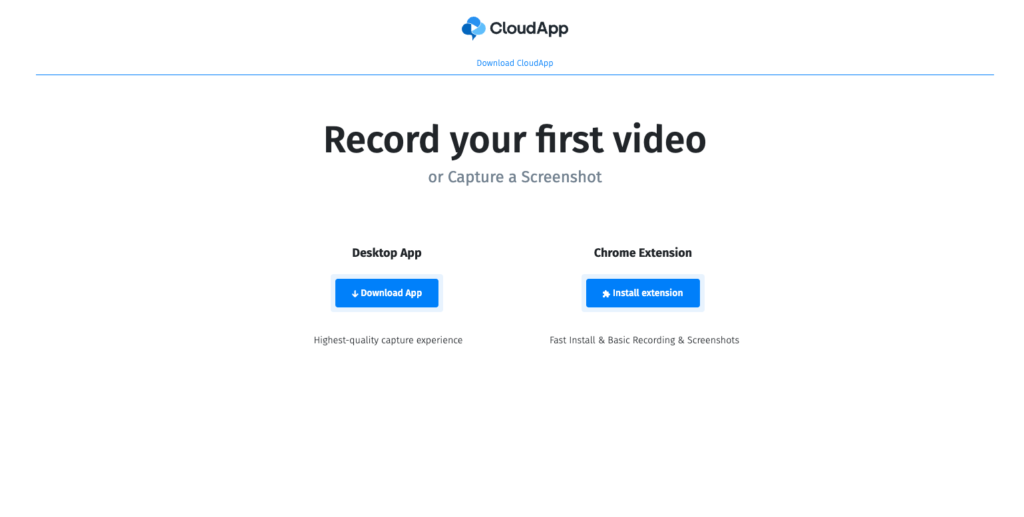
A super quick download, and I was ready to start playing with the product. Literally, within a minute, I was signed up and making ridiculous Gifs on my desktop through a chrome extension.
This brings us to...
The Right Kind Of Friction
When you think of onboarding, typically, you think about having as little friction as possible.
But did you know that friction can be good?
According to onboarding guru John Ramli, the “DAD framework” comprises three questions and helps determine the “right” kind of friction.
- Does the extra step bring your user to the value of your product faster?
- Does it add to and personalize the onboarding experience for the user?
- Does it delight users and get them excited about the product?
Product-Led Company Doing It Right: Twilio
Now that we know what good friction looks like let's take a look at Twilio. Twilio is a programmable, cloud communication platform that helps businesses efficiently communicate with their clients through voice, SMS, or e-mail.
Twilio doesn’t require a credit card for signing up because that doesn’t bring the user closer to their “Aha!” Moment.
But they do ask pointed questions accompanied by a drop-down list of answers to select.
The series of questions is friction that helps segment and personalize their product to the unique user, so the company can determine the best way to deliver value quickly.
It’s friction with purpose.
Now that you’ve seen both, which suits the product and user base?
A Helpful Empty State
It can feel overwhelming when a SaaS product is more complex and a setup is necessary.
A helpful empty state is a powerful way to guide users into meaningful actions, especially when it’s combined with content that includes helpful actions to guide the user to the next step.
It personalizes the product and helps them realize meaningful value quicker.
Product-Led Company Doing It Right: Heap
Still a new kid on the block, Heap is a digital insight platform that helps you understand how and why customers engage with your product. Then it uses data science to locate hidden opportunities that hold the most opportunity to onboard users.
Since you need to install the product, Heap’s empty state guides users through the most technical sections step-by-step. On the right-hand side, there are resources for additional help.
After that, you arrive at a customized dashboard with additional pop-ups and guides explaining how to use the product.
Action-Focused Product Tours
Product tours can be really boring, but when they are combined with meaningful actions, they lay a foundation of value discovery for your user.
They can be really potent to help the user discover high-value features that aren’t easy to understand without a little guidance.
Product-Led Doing It Right: Zendesk
Zendesk launched in 2007 at a time when social media was getting big. They help companies respond to complaints on social media platforms such as Facebook, Twitter, and Tumblr.
Zendesk has a lot of moving parts, and to make sure new users don’t get lost in their sea of functions, they have an action-based product tour that teaches you about each feature.
Log in, and you arrive at a dashboard with a list of the functions on the left-hand side. As you click on each function, there’s either a task or a video to watch.
As you complete each section, a checkmark appears. The tour is efficient because it teaches you how to use each function as you set it up for your company.
User Segmentation
Most products have many features, and most users arrive at your site for just one of those features.
Segmentation helps you understand the problem the user is trying to solve and guide them into the right channels so they can see how the product help them meet their goals.
Product-Led Company Doing It Right: Pendo
If you are a product-led company (or thinking of going product-led), you’ve probably heard of Pendo.
It’s a product analytics app that is both customer-facing and employee-facing. The data brings insight for user onboarding and product adoption to help software companies lead their users to the value acquisition of a product quickly and effectively.
Pendo understands that way they interact with users depends on the problem being solved and the segment they are guiding.
This is why as soon as you sign up, they ask if you want your users to adopt or engage. Once you choose your need, you’re directed to a carefully curated information page that walks you through the product.
Rapid Prototyping
Rapid Prototyping is a motion that allows users to try a system before signing up. For example, to use a Freemium Product or start a free trial, you usually provide at least an email address and password to make an account.
But with Rapid Prototyping, you start using the product straight on the landing page. The prototype typically has fewer features than the Freemium Product to incentivize users to sign up for Freemium if they like the product.
Product-Led Company Doing It Right: WebPageTest by CatchPoint
WebPageTest is an open-source platform that helps improve page speed and SEO. Since its inception, the developer community on the platform has been instrumental in creating the product used today.
The tool provides free in-depth front-end performance testing, including page load visuals for your website.
The user journey spans three stages of a user's needs to help developer performance.
- No sign up needed (free)
- Sign up for a few more value-added features (free)
- Subscriptions (monthly/annual) based on the need for premium features (paid)
Once you run a test from the prototype (without signing up!), your data is stored for 30 days, plus other features such as global connections, browsers, and connection speeds.
The Freemium Product includes all the features in the prototype plus additional features such as saving your data for 13 months, free zero-code A/B experiments, and a few others. The Premium Product has all of the Freemium features, plus more value-added functions.
To experience instant value from their tool, simply enter your website address on the landing page, and in minutes, you will receive a full report of performance insights for your website.
No signup, no email, just dig straight into the product.
Is it possible to be any more frictionless than that?
Personalized User Onboarding
Most companies have built a “one-size-fits-all” user onboarding experience fitted for their average new user. However, as products mature and more features are added, you don’t have one average new user. Now, you most likely have a few.
This is where a personalized approach can be really helpful.
Product-Led Company Doing It Right: MongoDB
The founders of DoubleClick needed a database that could support 400,000 ads per second. So they built MongoDB. A platform built on a scale-out architecture is ideal for developing scalable applications with evolving data schemas.
Knowing their product can be used in several ways, MongoDB guides the user through their objectives, so the platform is primed for the user to receive value quickly.
Then they get granular to ensure the user has what they need to succeed.
Once you choose your configurations, you can get to work. Or you can opt for the basic configuration to try it out in a Sandbox model before committing.
Free Solutions For User Pain Points
While yes, the overarching goal is to onboard users, the idea of a product-led growth strategy is turning your users into life-long advocates of your product.
One way to do that is to include tools that help your users leverage your product and the tools they use in everyday life. And making them readily available to your entire target user segment.
It’s about building trust and making yourself stand out from your competitors.
Product-Led Company Doing It Right: DigitalOcean
The idea was simple. Create the best cloud server experience and make it affordable for SMBs.
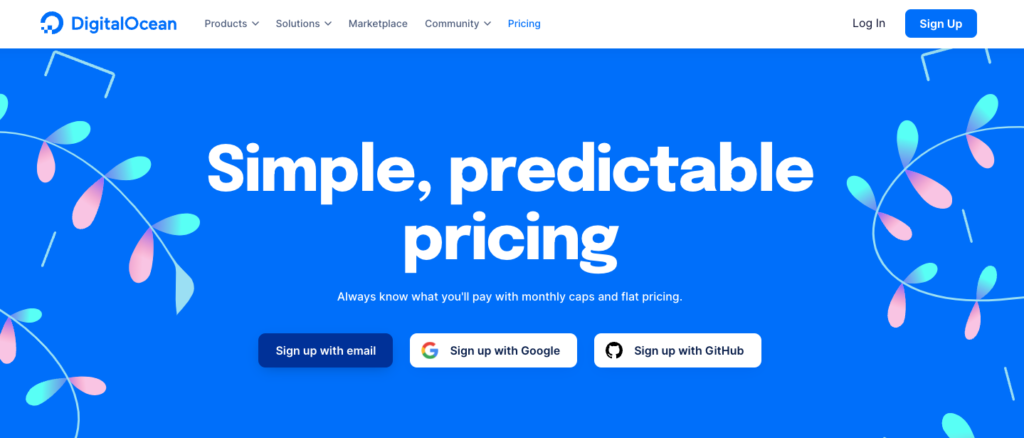
Even though they’ve grown big, they have still stuck by their strategy of putting their customers first. With the developer community in mind, they have six developer tools that anyone can use (located on their resource page).
These six tools help developers save time in many of their processes. Simply enter into the tool and input the data.
I tried it out on the DNS Lookup, and I had a complete report in seconds.
It was easy, helpful, and made me an advocate for DigitalOcean.
Being Human
Okay, guys/gals… there was some pretty heavy lifting in this article to get all the info. And in this process, I’ve noticed A LOT of companies acting more like “Lord Business”… than humans.
Most of these actions boiled down to meaningless friction. And in our daily lives, when we experience meaningless friction, it's usually with a large faceless corporation or some sort of bureaucratic process.
My point is that nobody feels happy when they do these tasks, it feels like work. It feels frustrating, a chore you HAVE to do.
It’s like the man is trying to hold us down with email verifications and paywalls when we just want to try the freaking product.
Product-Led Company Doing It Right: Basecamp
Since its inception, Basecamp has offered Time-Based Free Trials so teams can try out the project management system to determine if it aligns with their needs.
Aside from the easy sign up process, Basecamp’s CEO appears in a signed letter explaining what’s included in the journey and that users can reach out personally if they have questions.
It felt personal. It felt more human than business.
Then I thought to myself, “no way the CEO will answer my email. It’s a show.” Well, he did answer… and fast too.
I understand it’s not viable for each business to have the CEO respond, but I’m sure there are probably simple things you can do to make interactions feel more human and less corporate.
Thanks, Basecamp, for reminding me what that feels like.
A Reverse Trial In The Sign-Up
Have you ever accidentally fallen into the Free Trial portal when you are clearly a Freemium User?
And have you noticed, more often than not, there’s no direct way to get back to Freemium?
If it hasn’t happened to you, consider yourself lucky because it’s frustrating (like “time to go practice my axe throwing” level of frustration).
Often you have to sign up all over again.
Or maybe you ditch the product altogether and start checking out competitors because they already wasted your time once.
Product-Led Company Doing It Right: Trello
Trello is a visual project management tool that challenges people's thoughts about a mundane to-do list. Their software is flexible and boasts an intuitive and user-friendly interface.
And Trello has solved the problem of the wrong user falling into the wrong sales funnel using the Reverse Trial.
As always, you start by clicking on their Freemium Plan.
Of course, while they have a useful Freemium Product, they want you to try all the functionality of their Premium Product, so the next page brings you here.
This page is about getting users to take that extra pause to consider trying the Premium Product.
If you are Freemium to the bone, simply click the “Take me to Trello” button.
But let's say you are a “ride or die” Freemium, and that extra cup of coffee gave you a trigger finger, you accidentally hit the “Start Free Trial” button.
Nooooooooo!
Thankfully you land on this page.
No worries! Just click on the button “Start without free trial”...
……and you are directed straight back to the Freemium Product.
No drama.
Recurrence of Value
Recurrence of value is one of the principles that can help optimize your product-led strategy. And according to Mario Araujo of Outsystems, it is one of the first four principles of a successful product-led strategy.
By making the first value something that continues to reoccur, you position yourself for high retention. Top performers in the product-led space (think Zoom calendar plug-ins) are constantly reviewing retention cycles for insights for product development strategies.
Product-Led Company Doing It Right: Miro
Miro is a whiteboard platform to help collaborate ideas across offices.
Miro has distinguished itself from its competitors by patenting its whiteboard technologies that allow versatility and agility across platforms.
Part of their strategy is targeting a specific audience, understanding that it will satisfy no one if they try and please everyone. And to ensure their users continue to stay delighted, they created real-time audience feedback loops to adapt their product as needed.
Because cheat sheets and brainstorming are awesome and part of the process for so many things. So Miro helps you take those two things and present them to your team or client.
Can’t remember the new process? Go check out the Miro board.
Am I going down a rabbit hole? Hold on, let's check out the Miro board.
What are we pitching to the client? Where’s my Miro board?
That trusty cheat sheet keeps everyone aligned and helps you visually recognize if you have a hole in the process or even what the process is.
Showcase Social Proof
Social Proof was coined by Robert Cialdini in his book Influence, which is that we copy others in certain situations to be like them.
There are six types of social proof.
- Expert’s stamp of approval
- Celebrity endorsement
- Trust icons
- Data
- Customer testimonials
- Reviews
Product-Led Company Doing It Right: Notion
Notion is a workflow management software that provides a visual layout of projects and tasks to help teams collaborate, write, plan, and organize using a kanban view.
Notion has done a good job peppering their pages with social proof.
So these are well-known successful apps, and they use this tool…is that the secret to their success?
Once you scroll down, more social proof appears in the form of testimonials by leaders from well-known software companies.
There is an entire page dedicated to customers testimonials, explaining how Notion helped solve their problems.
Then they start pulling data on why they consistently rank as the G2 industry leader, which is a third-party platform for authentic software reviews.
These four screens touch all six types of social proof fluidly.
Need help refining your PLG strategy or adding these characteristics to your product? Check out our ProductLed Accelerator Program. It’s a 4-week actionable program followed by a year of Q&A-based live webinars led by PLG experts. You can enroll or schedule a call to answer any questions you may have.
Common Underlying PLG Characteristics
As you went through this list, I imagine some of the characteristics felt familiar, you’ve seen them in action. When employed collectively, they make a powerful strategy to create end-user success. They should collectively bring a feeling of excitement or delight.
Here’s a quick rundown of common themes that popped up while researching this article that can help (or hinder) success.
- Your Freemium Product should highlight what makes your product unique and useful. When users have a meaningful experience with your product, they won’t just convert, they will advocate.
- Kill the email verification walls. They’re frustrating, they waste time, and they aren’t really necessary.
- Get a new user interacting with the product with as little friction as possible with either rapid prototyping, frictionless sign-up, or an action-based onboarding that helps lay the foundation for a valuable product experience.
- Anticipate new user pain points and ensure you have an action-based tour, a tool, or a rich resource section that will quickly lift obstacles.
- The world needs more humans right now. Don’t be a faceless corporation. Be a human you would want to hang out with. Make each motion a part of this.
How Do I Get Started With PLG?
Knowing where to start is the hardest part. Luckily we have a list of free resources to help you get started.
- Read this introductory blog: What is Product-Led Growth? A Definition & Why It’s Taking Off.
- Learn the basics and become product-led certified with our Free Certification Course, where you will learn the fundamentals of world-class leaders in the PLG space.
- Read the #1 Best Selling book Product-Led Growth: How to build a product that sells itself for free.
- Form a strategy by learning about the 6 Product-Led Growth Models that provide a foundation for an effective PLG strategy.
- If you're a founder, consider joining our ProductLed Founders Program to go through the nine components of the ProductLed Method to really help your business scale faster.
There are a lot of amazing companies doing some really cool things.
In the comments below, let us know any product-led companies you think deserve a shout-out for their strong product-led characteristics.

